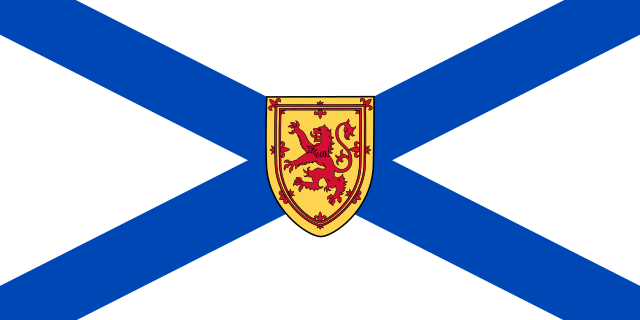
HALIFAX — A potential payoff of more than $500,000 motivated a Canadian sailboat captain to smuggle 250 kilograms of cocaine into Nova Scotia from a small Caribbean island, a judge said Friday as he sentenced Jacques John Grenier to 13 years in prison.
“It was just greed, Mr. Grenier, plain and simple,” provincial court Judge Gregory Lenehan told the 69-year-old accused.
An expert testified that the drugs — probably purchased for about $3 million from a Mexican drug cartel — had an estimated street value of $20 million.
Grenier, who moved to Nova Scotia in 2015 and was unemployed, had earlier pleaded guilty to two charges: possession for the purposes of trafficking cocaine and importing cocaine. A third charge, conspiracy to import cocaine, was withdrawn.
Lenehan said he took into account Grenier’s age, his guilty pleas and the fact that he has skin cancer.
But the judge said a double-digit sentence was needed to discourage others from using Nova Scotia’s craggy coastline as a “soft target” for drug smuggling.
“You’re coming to your sunset years,” Lenehan told Grenier, a tall but thin man with a swarm of surgical scars above his left eye. “You don’t have 30 or 40 years left.”
Grenier, a resident of Hubbards, N.S., with no prior criminal record, was arrested Sept. 3 after officers with the Canada Border Services Agency boarded his 32-foot sailboat Quesera at a marina east of Halifax. Court heard Grenier had sailed the vessel solo from the Dutch side of Sint Maarten, an island east of the Virgin Islands.
The officers found bricks of cocaine hidden beneath a sealed bed frame in the forward sleeping quarters of the Canadian-registered vessel. The RCMP were called in, Grenier was arrested and more cocaine was found hidden throughout the boat.
The judge concluded Grenier was one of the “middle players” in the smuggling operation.
However, federal Crown attorney Glen Scheuer argued Grenier was in fact a trusted member of an organized crime ring, noting that Grenier admitted he was responsible for paying the cartel for the drugs and that he was the only person aboard the sailboat when it left the Caribbean.
There was no indication where the drug payment originally came from.
When asked if he wanted to address the court, Grenier stood to offer a brief statement.
“I’m here to be judged and I’m ready to start my time,” he said in a clear voice, a baggy grey sweater hanging loosely around his narrow shoulders. “I’ll work hard while I’m incarcerated … When I get out, I’ll be a stronger and healthier Canadian taxpayer.”
In an agreed statement of facts, court heard Grenier had purchased the boat after he moved to Nova Scotia and later sailed to Sint Maarten in August 2016.
Grenier admitted that he picked up the cocaine from a fishing trawler off the coast of Venezuela in international waters last August, then sailed back to Sint Maarten, where he purchased provisions for the voyage home to Nova Scotia.
After he arrived at East River Marine in Hubbards, he left to pick up a rental car and 10 large hockey bags, court heard.
When he returned around 10 p.m., officers were waiting for him.
Earlier in the hearing, RCMP drug expert Joseph Tomeo testified that the drugs were packaged in different colours of plastic wrap, and that each colour had a different level of purity — between 72 to 84 per cent.
Tomeo said the cocaine had been mixed with other ingredients, which suggested to him the drugs had come from different labs.
He said this practice is common in Mexico, which stands in contrasts to labs in Columbia, known for producing cocaine that is more than 80 per cent pure.
Tomeo, a retired staff sergeant who worked in the RCMP’s Montreal drug unit for more than 25 years, said the amount of cocaine Grenier was carrying indicated he had strong contacts within the cartel.
“It shows a high level of trust in the individual,” said Tomeo, now an RCMP reservist. “And it’s extremely rare that this is done alone.”
However, Tomeo later told defence lawyer Patrick MacEwen there was no direct evidence that Grenier had done this sort of thing before, even though the experienced sailor had admitted to crossing paths with drug dealers during his travels abroad.
The wholesale value for a kilogram of cocaine in Montreal is now about $47,000 — and its street value is much higher, at about $80 a gram, Tomeo said.
He said Nova Scotia remains a popular destination for drug smugglers, mainly because police and the CBSA are unable to monitor all of the province’s bays and inlets.
“It’s an ideal spot,” said Tomeo, who regularly lectures at police colleges about the trade in illicit narcotics and alcohol. “Nova Scotia, unfortunately, is a known landing spot for cocaine coming into Canada.”
As well, Tomeo confirmed that the Dutch side of Sint Maarten was a key waypoint for international drug dealers.
“You get away with more on the Dutch side,” he told the court. “It’s a well known staging area for cocaine vessels.”
Grenier’s sentencing was delayed several times because he underwent surgery and switched lawyers. His sentence was reduced by one year because he had already spent eight months in custody.
A Quebec man, Luc Chevrefils, is also charged in the case. He is expected to stand trial in August.